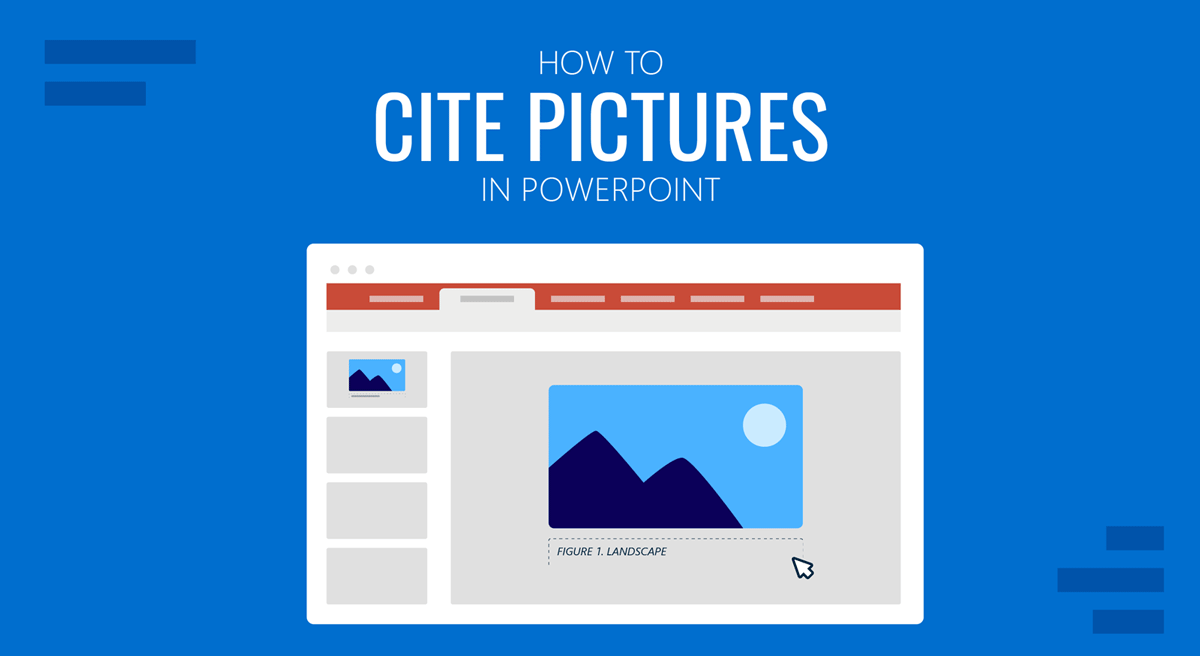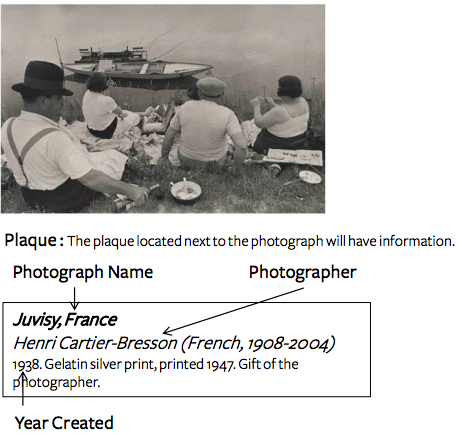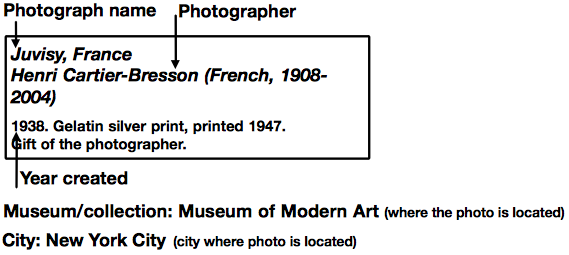Hey there! If you're diving into the world of imagery for your projects, you've likely come across Getty Images. This platform is a treasure trove of high-quality visuals that can elevate your content significantly. Whether you're working on a blog, social media campaign, or marketing materials, using professional images can make all the difference. In this post, we'll discuss how to properly cite Getty Images and why it matters!
Understanding Copyright and Licensing for Getty Images

When it comes to using images from Getty, understanding copyright and licensing is crucial. Let's break it down:
1. What is Copyright?
Copyright is a legal term that gives the creator of an original work exclusive rights to its use and distribution. This means that if someone takes a photo, they own that image, and you need their permission to use it. Ignoring copyright laws can lead to serious legal consequences, including fines and takedown notices!
2. Licensing Explained
Licensing is the process by which a copyright holder grants permission to others to use their works under specific conditions. Getty Images operates on a licensing model, which means that when you want to use an image, you must obtain the appropriate license.
Here are the main types of licenses you might encounter on Getty Images:
- Royalty-Free License: This allows you to use the image without paying royalties after the initial purchase. You can use it multiple times in different projects.
- Rights Managed License: This gives you a limited right to use the image based on specific parameters, such as duration, region, and usage type. Each use may require additional fees.
3. Why Licensing Matters
Using images without proper licensing can harm both you and the creator. For creators, unlicensed usage can lead to lost revenue and control over their work. For you, using an image without a license can get you into legal trouble and damage your reputation. Always double-check the licensing terms before using an image!
4. How to Cite Getty Images Correctly
Citing Getty Images is just as important as using them properly. Here are some tips on how to do it:
- Include the photographer's name: Always credit the creator to give them recognition for their work.
- Specify the source: Mention that the image is from Getty Images.
- Provide the URL: If applicable, link back to the image on Getty’s website to give viewers more information.
For example, a proper citation might look like this: “Photo by John Doe on Getty Images.” Including these details not only respects the creators but also adds professionalism to your work.
In conclusion, understanding copyright and licensing for Getty Images is essential for anyone wishing to incorporate quality imagery into their projects. Take the time to learn about these concepts, and you'll build a solid foundation for using visuals responsibly and ethically. Happy creating!
Also Read This: How to Successfully Sell Your Photographs on iStock
3. Why Proper Citation of Getty Images Matters

When it comes to using images from Getty, proper citation isn't just a formality; it's absolutely essential. Think about it: you wouldn't want someone to take your work and claim it as their own, right? Similarly, Getty Images provides a valuable resource for creatives, marketers, and businesses, and giving credit where credit is due is a matter of ethical responsibility.
1. Legal Protection
Using Getty Images without proper credit can lead to a myriad of legal issues. Getty is known for protecting its copyrights fiercely, and unauthorized use can result in hefty fines. By citing images correctly, you not only respect copyright laws but also protect yourself from potential legal ramifications.
2. Respecting Creators
Many photographers and artists rely on the licensing fees from their work to make a living. When you properly cite Getty Images, you're acknowledging the hard work and creativity that went into producing that image. This respect fosters a better environment for artists and contributes to a culture that values originality and creativity.
3. Building Credibility
Incorporating high-quality, properly cited images enhances your project’s credibility. Whether it’s a blog post, advertisement, or social media content, showing that you've sourced your visuals ethically reflects professionalism. It proves you care about your work and the sources you choose.
4. Enhancing SEO
Believe it or not, proper citation can improve your search engine optimization strategies, too. When you correctly credit images and link back to their source, it can help drive traffic to your content. Furthermore, search engines like Google favor original content and ethical sourcing, which might boost your visibility online.
Ultimately, understanding and adhering to proper citation practices is critical for anyone using Getty Images. It’s about more than just following the rules; it’s about fostering a community built on respect, creativity, and professionalism.
Also Read This: A Complete Guide to Selecting Stock Photos That Align with Your Brand
4. Different Methods for Citing Getty Images

Citing Getty Images doesn’t have to be a daunting task. In fact, it’s quite straightforward once you know the effective methods at your disposal. Here are some popular techniques you can utilize:
- 1. Direct Attribution: This is the most common method. Simply include a caption below the image or in the credits section. For example:
"Image by [Photographer’s Name] via Getty Images" - 2. Hyperlinking: If you're utilizing digital formats such as blogs or websites, hyperlinking is an effective method. When mentioning the image in your text, link directly to the Getty source. For example:
"As seen in [insert hyperlink to Getty]" - 3. Creative Commons Style: If you are using Creative Commons images or those that allow modification, follow their guidelines for citation. Typically, it would look something like:
"[Title of Image]" by [Photographer’s Name], used under [license type]; [link to license]" - 4. Reference List: For academic papers or detailed reports, including a reference list at the end is a good idea. Each image citation should contain information such as the photographer, title, source, and access date. An example citation might look like this:
Doe, John. "Sunset Over the Ocean." Getty Images, 2023, www.gettyimages.com/sunset.jpg.
Regardless of the method you choose, the critical thing is to remain consistent throughout your work. Pick a style that fits your content, and stick with it! By adopting these practices, you not only protect yourself and respect the artist's rights but also enhance the overall professionalism of your projects. Happy citing!
Also Read This: How to Sell Photos Through Getty Images and Start Earning Income
5. Guidelines for Including Getty Image Credits in Your Work

Properly citing images from Getty is crucial for maintaining ethical standards and respecting copyright. Let's break down some straightforward guidelines to follow when you include Getty images in your work.
1. Use the Correct Attribution Format: Typically, your attribution should include the photographer's name, the title of the image (if applicable), and Getty Images as the source. For example:
- Photographer Name. Title of the Image. Getty Images.
This format ensures that you give credit where it’s due and also helps others find the original work if they wish to learn more.
2. Location Matters: Always place the image credit near where the image appears. Ideally, this should be at the bottom of the image or immediately following it in the text. This proximity helps your audience easily make the connection between the image and its source.
3. Follow Getty’s Specific Guidelines: Getty Images may have specific requirements for citing their images, especially in commercial contexts or when used in publications. Always check the licensing agreement that comes with the image you are using. This document often contains detailed citation instructions.
4. Maintain Consistency: If you are using multiple Getty Images throughout your work, ensure that your citation style remains consistent. Whether you choose to format the credits in a particular font, size, or color, keeping them uniform enhances the professionalism of your document.
5. Utilize Shorthand References: In some instances, you may not want to clutter your text with long image credits. In such cases, you can create a reference section at the end of your work where all Getty images are credited. Just make sure to reference them clearly in the image captions as well.
Following these guidelines will not only help you legally but also build your reputation as someone who respects intellectual property rights. So, take the time to get it right!
Also Read This: Exploring Getty Images Free Trial: What You Should Know
6. Common Mistakes to Avoid When Citing Getty Images
Even the most seasoned creators can make mistakes when it comes to citing Getty Images. Here are some of the most common pitfalls to watch out for:
1. Missing Attribution: Forgetting to credit the image source is a major no-no. Always remember that failing to give credit is not just against copyright laws; it also shows disrespect for the artist’s work. Make it a habit to include credits every time.
2. Incorrect Details: Double-check the spelling of the photographer's name and the accuracy of the image title. Simple typos can undermine your credibility and could lead to potential legal issues if the attribution is deemed misleading.
3. Using Images Without License: A significant mistake is using Getty images without the appropriate licenses. Remember, not all images are free for commercial use. Make sure your license covers your intended use to avoid future problems.
4. Ignoring Image Placement: Placing image credits far from the images can confuse viewers and undermine the connection. Always position the credits in a way that they’re easy to locate. Think of it as a polite thank-you note to the artist!
5. Overlooking the Context of Use: Different contexts require different citation methods. Using Getty images in a blog post may differ from how you'd cite them in a formal report or academic paper. Pay attention to the guidelines of each medium.
6. Not Checking Updates: Getty Images may update their guidelines. Staying informed about these changes can save you from potential issues down the line. Always refer to their official website for the latest policy updates.
By avoiding these common mistakes and adhering to the guidelines laid out, you will ensure that your work remains respectful and legally compliant. Proper image attribution not only protects you but also acknowledges the creative efforts of the photographers behind the images you love.
Also Read This: Citing Getty Images: Proper Attribution for Academic and Creative Works
7. Tools and Resources for Effective Image Citations
Citing images correctly is crucial, especially when it comes to maintaining credibility and respect for copyright. Fortunately, there are several handy tools and resources that can assist you in effectively quoting Getty Images and other similar resources. Here are some recommendations:
- Creative Commons Search: This tool allows you to search for images that are available for reuse. Just make sure to check the specific licensing for each image, as the requirements can differ.
- Citation Generators: Online citation tools like Citation Machine or Citefast can help you create proper citations in various formats (APA, MLA, Chicago) in just a few clicks. With these generators, simply input the image details—like title, creator, source URL—and voilà! You have a ready-made citation.
- Getty Images Website: If you're using images from Getty, don’t overlook the company's own guidelines. They have a specific citation format that you’ll want to follow. Explore the information provided on their site for the most accurate and compliant way to cite their images.
- Bibliographic Databases: Tools like Zotero and Mendeley can help manage all your references in one place. They allow you to store the details of images along with other types of references, and can generate citations in the required format quickly.
- APA and MLA Guidelines: Familiarize yourself with the American Psychological Association (APA) and Modern Language Association (MLA) guidelines. Both organizations have online resources that provide insight into how to cite images properly, ensuring you're compliant with academic standards.
Using these tools and resources can help streamline the process of citing images. It saves you time and ensures that you're doing everything by the book. Always remember that a well-cited image not only gives credit to the creator but also enhances the credibility of your own work.
8. Conclusion and Best Practices for Citing Getty Images
In conclusion, citing Getty Images appropriately is not just a matter of legality; it’s about showing respect for the creators and ensuring that you are using images ethically. By following best practices and utilizing the available tools and resources, you can navigate the murky waters of image citation with ease.
Here are some best practices to keep in mind:
- Check Licensing: Always verify the licensing of the image. Getty Images provides different licenses—some may allow free usage while others require payment. Make sure to understand these terms.
- Use the Proper Format: Follow the specific citation format required for your project. Whether you’re in academia or publishing online, adhering to the correct format is crucial.
- Keep Records: Store all citation information, including the image URL, creator's name, and the date you accessed the image. This can be invaluable, especially for future projects or revisions.
- Do Not Alter: Unless the licensing allows for modifications, avoid altering the images. Misrepresenting someone else's work can lead to legal issues and is generally considered unethical.
- Consult Resources: Don’t hesitate to leverage the tools and resources mentioned earlier to make your citation process smoother.
By following these guidelines, you’ll not only protect yourself legally but also foster a culture of respect and recognition within the creative community. Remember, every image tells a story, and properly citing it helps to tell that story accurately while giving credit where it’s due.
 admin
admin








